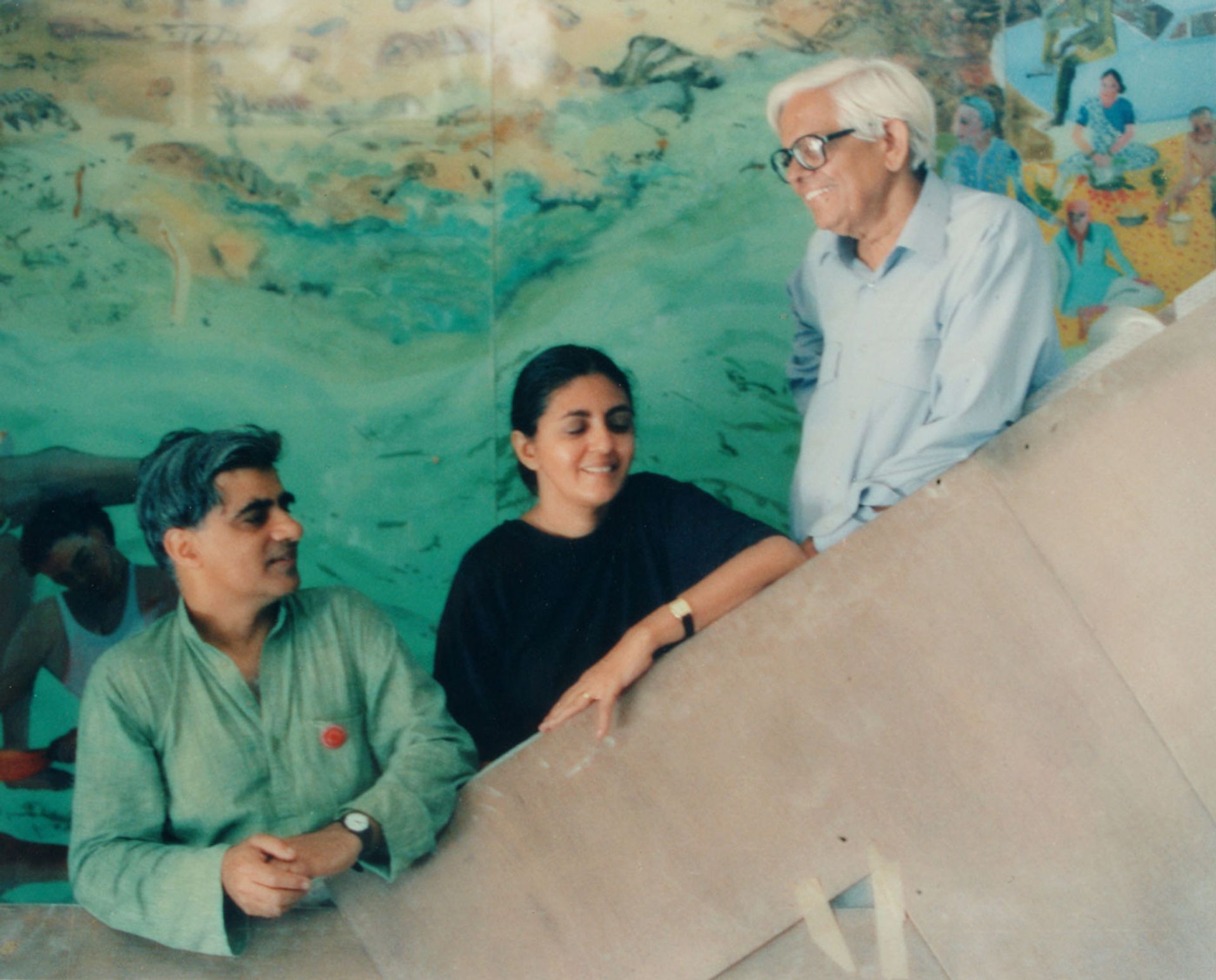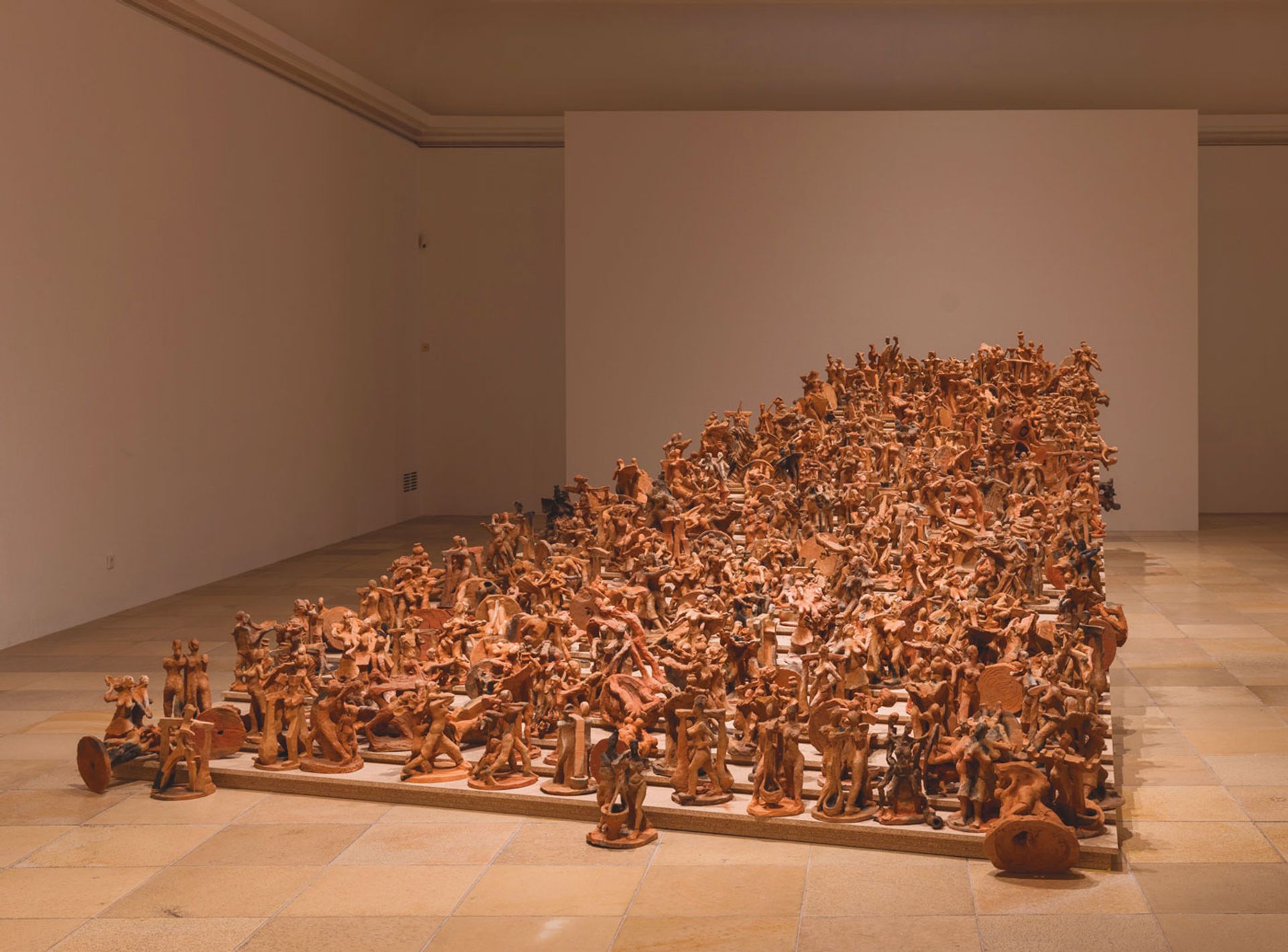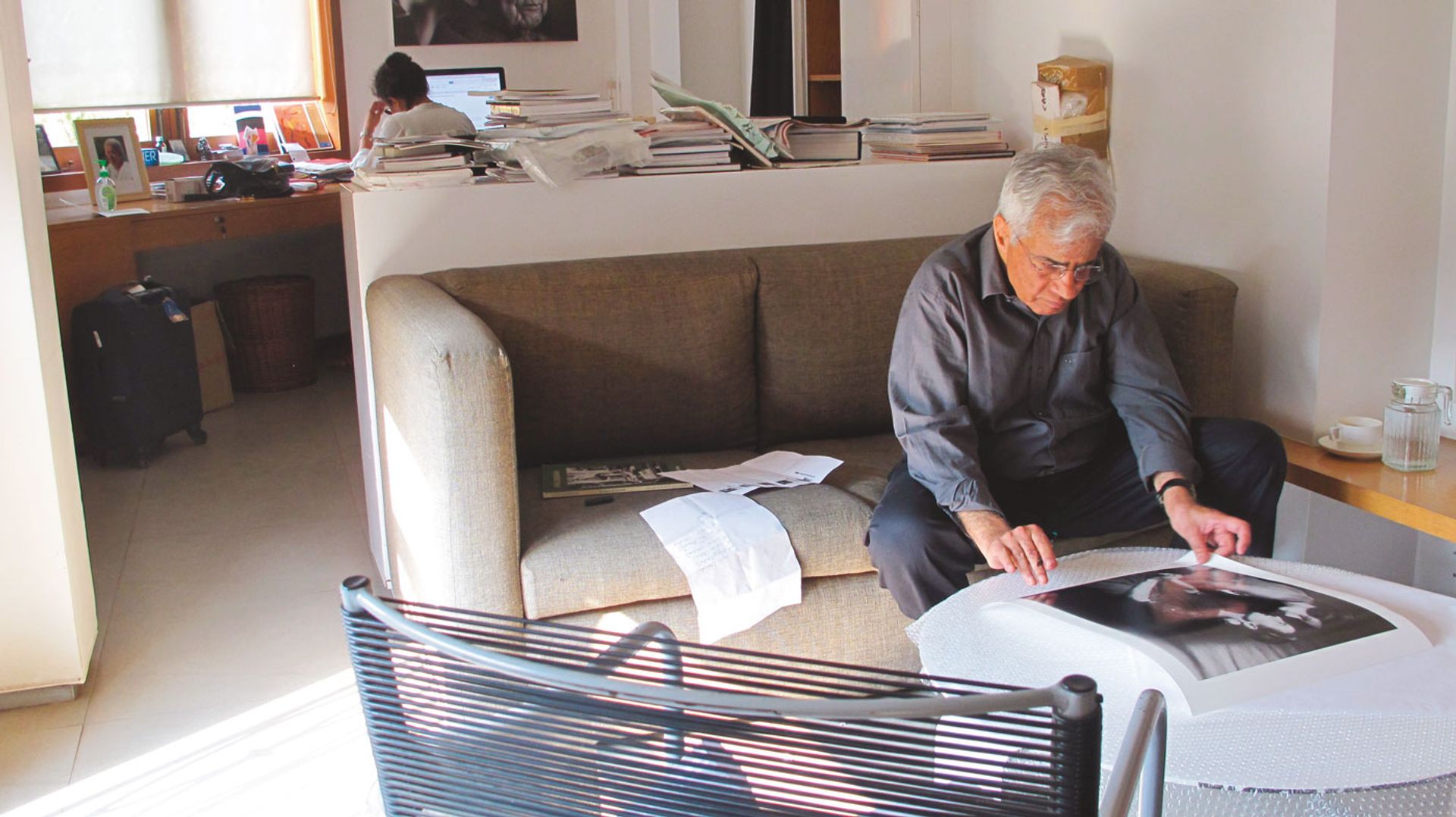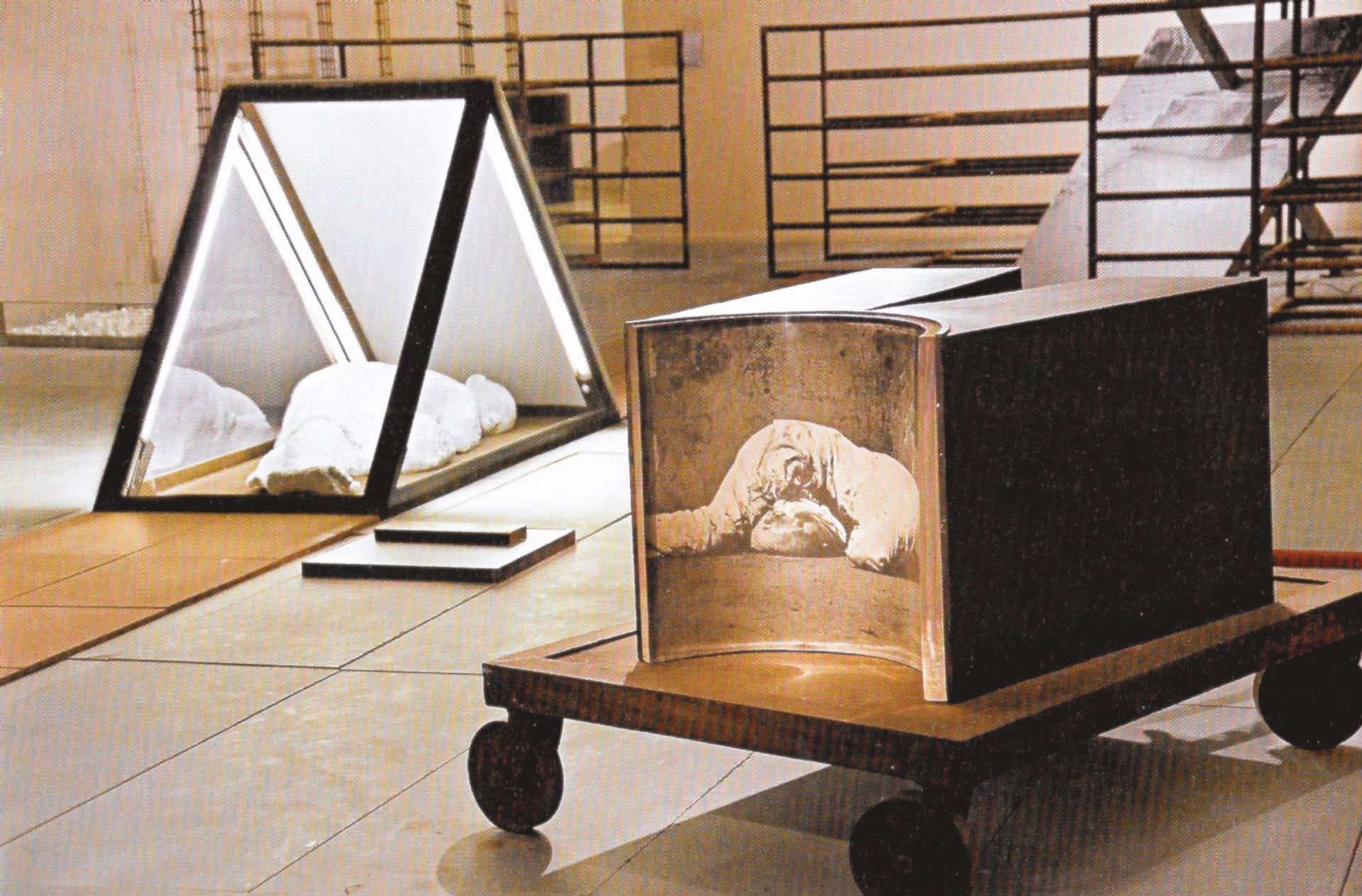In a catalog entry on Vivan Sundaram’s 1966 exhibition at the Dhoomimal Gallery in New Delhi, his former professor at Maharaja Sayajirao University in Baroda (now Vadodara), the eminent artist and pedagogue KG Subramanyan, characterizes his emergent work as “the living scene”. Subramanyan approaches Sundaram as a young artist boldly charting a distinctive path that engages with the complex visual culture of post-independence India via “the old rushing with the new, the naive and the sophisticated, the sober and the hysteric”.
Shortly after this solo debut, Sundaram moved to London to study at the Slade School of Fine Art, where he was mentored by British-American artist RB Kitaj. Activism beyond the classroom and the white cube became part of Sundaram’s daily creed as he joined efforts to create a commune for civil rights activists and even managed to get himself arrested in some time during his years in London. Sundaram produced an outstanding suite of paintings in 1968, including South Africa And Persian miniatures at Stan Brakhagewhich reveal his political acumen and experimental depth as he sensed the revolutionary ferment in the aesthetic language of contemporary pop, surreal grammar and narrative figuration – steeped in the charged atmosphere of student protests, the anti-apartheid movement in Britain, Opposition to the Vietnam War, and Marxist Thought.

Vivan Sundaram (left) in front Glass mural (1989), at Shah House, Mumbai, with his co-creators of the work Nalini Malani (centre) and Bhupen Khakhar Courtesy of Vivan Sundaram and Sher-Gil Sundaram Arts Foundation
Some of these formative works were exhibited in the investigative show Vivan Sundaram: Disjunctions (2018) at Haus der Kunst, Munich, curated by Deepak Ananth and designed by the late Okwui Enwezor. In e-mail correspondence with me, Enwezor wrote: “The work is never overworked but considers the liveliness of the workmanship and the traces of human labor as means of knowing, but it is above all its coherent exercise and without compromise to build a vital relationship between art and humanism that allows us to engage the powerful work of a thinker of forms and ideas at his level.The paintings found are the highlight of the show. everything that I always hoped to see in the artistic practice of serious artists. You have to come and see the exhibition.
[Sundaram’s work] is never overworked… that’s all I hoped to see in the artistic practice of serious artists
Okwui Enwezor, 2018
In February, Sundaram’s latest attempt, Six stations of a continued life (2022), was unveiled at the Sharjah Biennale as part of 30 new commissions selected by Enwezor and Hoor al Qasimi, director of the Sharjah Art Foundation and curator of the 15th edition of the Biennale. In this sequence of paintings, a group of protagonists dressed in black come together, snuggle up, lean against each other as if to mark on the skin the incandescent embers of mourning and the wrinkled contours of traumatic memory. Given the artist’s persistent investigation of mortality, aesthetic freedom and politically resonant narrative construction, it is odd but not at all surprising that this strikingly confrontational work represents the final offering to his global audience.

Vivan Sundaram, One and many (2015), consisting of 409 terracotta figurines © Vivan Sundaram. Photo: Maximilian Geuter. Courtesy of Chemould Prescott Road
During the 1970s, Sundaram was associated with the cultural engagements and civic actions of the Federation of All India Students and the All India Kisan Sabha, the farmers’ wing of the Communist Party of India. While his close friends and comrades were party members, policy makers and scholars, Sundaram chose to stay out of party politics, and yet he was vocal on issues that impinged on secular values, the artistic expression and the community spirit of public life.
Sundaram painting People come and go (1981) is indicative of this circle of camaraderie, shared inspiration, and the worldliness of an artist’s home, as it depicts artists Howard Hodgkin and Bhupen Khakhar with his friend Vallabhbai in Khakhar’s living room studio. The painting was a highlight of the Festival of India exhibition contemporary indian art at the Royal Academy of Arts in London in 1982, organized by critic-curator and life partner of Sundaram Geeta Kapur, and Richard Bartholomew.
A scholarly and artistic lineage
For Sundaram, the archiving of traces of artistic kinship naturally extended to his own family as he gathered their lineage through photomontages, mnemonic memories and publishing. Sundaram’s maternal grandfather, Umrao Singh Sher-Gil, was a Sanskrit and Persian scholar, yogi and pioneering photographer. Her mother, Indira, was the younger sister of legendary artist Amrita Sher-Gil, whose life bridged the South Asian and European cultural spheres. His sister Navina Sundaram moved to Germany in 1964, where she worked as a prominent television journalist, political editor and filmmaker. Their father Kalyan Sundaram was the first Legal Secretary and the second Chief Election Commissioner during the Nehruvian era. Vivan Sundaram was born into this richly talented family, in the hill town of Shimla in 1943, and was educated at the Doon School, before going on to university.

Sundaram at his Delhi home with art critic and curator Geeta Kapur, his wife of nearly 40 years
As a leading cultural organizer, Sundaram reveled in creative alliances, and that trait never dulled as he spearheaded collaborative models for studio work, speech and presentation. activism. The most recent, and one that continues his family’s artistic legacy, is the New Delhi-based Sher-Gil Sundaram Arts Foundation. In 1976 he founded the Kasauli Art Center at his ancestral home of Kasauli in the Sub-Himalayan mountain range. Ivy Lodge has become a hub for artist studios, interdisciplinary residencies, experimental productions and generous intellectual pursuits. Economist Prabhat Patnaik recalled in his commemorative statement on Sundaram how “the idea of starting a newspaper was mooted” at a seminar in Kasauli, “which quickly became a reality in the form of the Journal of Arts and Ideas. The magazine could not last long, but its few issues testify to the effervescence of the time and also to the immense talent of the country”. The second issue, released in 1983, features the literary contributions of Gabriel García Márquez. It lists Sundaram as part of the editorial team and features a series of covers and drawings he composed in Mexico in 1978, accompanying an interview elucidating Márquez’s view of the arts, society and dictatorship, translated from Russian.
Large-scale installations
When I became acquainted with Vivan Sundaram and Geeta Kapur in New Delhi in the mid-2000s, it was not only through her exhibitions, but also through her humorous and engaged presence at public events of the Safdar Hashmi Memorial Trust, of which he was a founding trustee. The rise of Hindu nationalism – or Hindutva – in recent decades and the impoverishment of India’s secular fabric have continually troubled it, while galvanizing distinctive public art efforts and community-led exhibitions such that Art in motion, gift for India And Ways of Resisting: 1992-2002.
The Colossal Sundaram Project Memorial, created in 1993 and elaborated over several years, has established itself in this vein as a call “against oblivion”. This immersive installation, presented as part of city of the century at the Tate Modern, London, in 2001 in the chapter Bombay/Bombay: 1992-2001 co-curated by Geeta Kapur and Ashish Rajadhyaksha – and once again on display in the Tanks section of the museum, reminiscent of an archaeological ruin, burial and crime scene. It includes a silhouette of steel barriers and a walkway made of luggage – marking the destruction of the Babri Mosque in Ayodhya in 1992 by right-wing Hindu mobs, a cataclysmic event beyond the scope of singular representation – and a news photography of Hoshi Jal for the India time in January 1993 of an unknown victim of the Bombay riots slumped on a street corner.

Vivan Sundaram, Gun carriage and mausoleum (2014), part of his monumental project Memorial (1993-2014) © Vivan Sundaram. Courtesy of Chemould Prescott Road
Multimedia 409 Ramkinkars (2015), produced at the Indira Gandhi National Center for the Arts in New Delhi in collaboration with directors Anuradha Kapur and Aditee Biswas and screenwriter Belinder Dhanoa, is an epic cycle combining the organic and mechanical aspects of performance centered on Ramkinkar Baij, Bengali modernist artist and pedagogue based in Santiniketan. It is another powerful reminder of how Sundaram invoked facets of cultural history, social biography and labor politics, converging kinetic stage elements, a wide cast of actors and lighting in A Gesamtkunstwerk.
During the 8th Berlin Biennale of Contemporary Art in 2014, curator Juan A. Gaitán and I worked closely with Sundaram to exhibit works from his series Long Night: Charcoal Drawings (1987-88) as well as Motor Oil and Charcoal: Works on Paper (1990-91). In a 2019 interview in the Mock examSundaram said, “The first example of my installation work is the Engine oil (1991), which refers to the assault by US-led coalition forces on Iraq in order to gain control of oil resources. Before that, I made the charcoal drawings Long night (1988), which refer to the large concrete pillars and barbed wire of Auschwitz. The Gulf War was fought from the air, and this aerial aspect of the war pushed me to dismantle the framework.
In today’s climate of war, resource extraction and civic resistance, these series take on renewed significance. The words of James Baldwin in The creative process come to mind when evoking this visionary artist and opinion leader: “Societies never know it, but the war of an artist with his society is a war of lovers.
Vivan Sundaram; born Shimla on May 28, 1943; married in 1985 Geeta Kapur; died in New Delhi on March 29, 2023.
